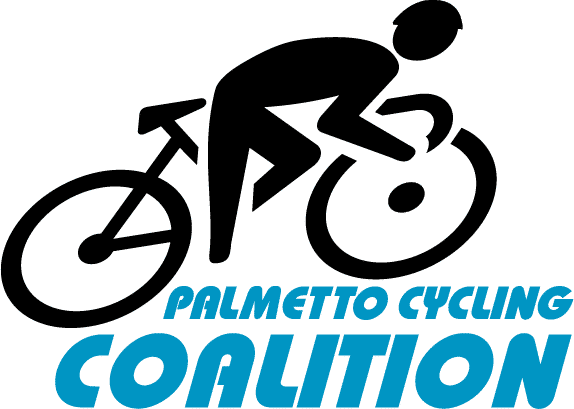PCC presents on Street Retrofits
A few weeks ago, we took up an opportunity offered by SCDOT to present at a statewide conference for regional planners. Gratefully, we accepted and partnered with SCDOT’s Elizabeth Thebo and ALTA Planning’s Jean Crowther. The Coalition presented on HOW one can fit bike accommodations (and pedestrian, to a lesser extent) into the existing pavement Right-of-Way of any street in our state. In other words, how does a city fit more level of service, for all users, into the same street width? Easily.
I first talked about the physical/design process, and then the social aspects of making this happen. The planners and engineers should critically and creatively assess basic street design principles like 1) what travel modes are in demand, and 2) which modes have a safety problem that need attention?. When these broad questions are answered, the next step is to work through the details of street design. They’ll then ask 3) how much room do I have to work with by reducing lane widths, and 4) how many lanes do I really need for the # of cars currently? Each lane can carry 5k/cars/day and sometimes up to 10k/cars/day, and a center turn lane is capable of carrying 10k/day.
 And second is the social challenge, because you’re changing the environment, so you must talk at length with the public prior to pavement. Take 2+ years to talk to every business owner on the street, plus neighborhood and community organizations, and you can eventually win them over by discussing the multiple benefits. Those are: 33% fewer crashes, increased business for adjacent businesses, more consistent through flow of traffic, less frustration when driving with the left turning driver because he’s in the turn lane – not your through lane. And last, it provides a higher level of service and safety to bicyclists and pedestrians. That simply happens through better design for them, making them more predictable to drivers. This alone will make the street safer for those on bike and foot.
And second is the social challenge, because you’re changing the environment, so you must talk at length with the public prior to pavement. Take 2+ years to talk to every business owner on the street, plus neighborhood and community organizations, and you can eventually win them over by discussing the multiple benefits. Those are: 33% fewer crashes, increased business for adjacent businesses, more consistent through flow of traffic, less frustration when driving with the left turning driver because he’s in the turn lane – not your through lane. And last, it provides a higher level of service and safety to bicyclists and pedestrians. That simply happens through better design for them, making them more predictable to drivers. This alone will make the street safer for those on bike and foot.
We also wanted to help SCDOT resolve a challenge it was experiencing – with data. Yup, not too exciting, but it really was the linch pin in a state system trying to work, but getting hung up in computer coordination problems with local municipalities and regions. Bike lanes come from planners, and planners in each of our 48 South Carolina counties have Master Plans for their streets. Long story short (because data will make you snooze): if your county has a Bike or Pedestrian Master Plan, you should ask your city/county official if it’s been sent to SCDOT (in the tabular or map form SCDOT needs), or at least to your MPO and then to SCDOT. Outside of that, your Bike or Pedestrian plan risks not being readable by SCDOT. And that should and might be the least of your worries before the trucks show up to repave and restripe – what should be two beautiful bike lanes, and refuge islands.
